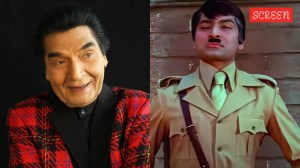NE pushes rebels back, honours heroes
KOHIMA, July 17: He's too old to walk five miles, up and down the mountain, so he stays at home. And when the villagers come down, 85-yea...

KOHIMA, July 17: He’s too old to walk five miles, up and down the mountain, so he stays at home. And when the villagers come down, 85-year-old Pfulhousa can’t believe it. They tell him stories of the funeral of his grandson Lieutenant Neikezhakuo (Neibu) Kengurusie, how thousands were there, including 29 Assam Rifles officers, all the way from Dimapur airport to Kohima and then to the family burial place at Pheza. His grandson died a hero in faraway Kargil.
Nagaland hasn’t seen anything like this since the death of its legendary leader Phizo in 1989.
A week after the funeral, Pfulhousa is a confused man because he remembers too much. Like the Japanese invasion and the battle they fought and lost with the British at Nerhema on their way to Kohima in 1944. But more crucial for Neibu’s story is that his grandpa also remembers how he and other villagers suffered at the hands of the Indian Army: “Twice, the village was burnt down (during anti-insurgency operations). We survived on burnt rice and were forcedto work as coolies for the Army.” Pipes in another old man sitting next to him, at Nerhema: “For several generations, between us and the Indian Army there was nothing but fear and hatred. But Neibu has made us all proud.”
Nerhema’s reactions reflect much of the public mood in Nagaland where the two-year-long ceasefire between the Army and the rebels has given the people the long-awaited taste of peace.
The sense of pride also pervades villagers at Ancholi in Assam’s Barpeta district. Like Pfulhousa, Bandhuram Das had seen Indian Army jawans raiding villages in his area in search of ULFA and Bodo militants, particularly the ones belonging to the National Democratic Front of Bodoland (NDFB). But when the 26 Madras Battalion officers and men carried the body of Bandhuram’s only son Uddhab, a gunner in 197 Field Regiment, to the village, thousands of people from all around joined the grieving father in a collective show of pride and solidarity.
“If I had another brother, I would have urged him to jointhe Army,” says Uddhab’s 16-year-old sister Jayanti who has just passed her matriculation examinations. Ancholi alone has about 150 people in the Army and some 25 ex-servicemen. “My brother Baikuntha is also fighting in Kargil. I’d also like to join the Army,” says neighbour Biren Das, as a group of women huddle under the canopy erected outside Uddhab’s humble hut for his last rites.
A couple of days after Uddhab’s funeral, another grand spectacle unfolds at the Fire Brigade Ground in Shillong where thousands of men gather to pay their last respects to Captain K Clifford Nongrum who died fighting the Pak intruders in Batalik. It’s the biggest funeral Shillong has ever seen — bigger than that of veteran Meghalaya politician Captain (retd) Williamson Sangma. “And this was in a town where the traditional agitation slogan is `We are Khasis by birth and Indians by accident’,” says a local politician.
And similar are the shows for Kargil martyrs from Manipur where too a decades-old insurgency has pittedsections of local people against the Indian Army and paramilitary forces. Not just at the funerals, the insurgency-hit States of Assam, Nagaland or Manipur also had the unique experience of people expressing sympathy and solidarity for the Indian Armymen fighting in Kargil-Batalik. In Assam’s Sibsagar district last week, local people lynched an ULFA activist when he reportedly warned them against raising funds for the Indian Army jawans. In Assam, stories were circulating of two ULFA activists, Saurav Kakati and Bolin Mech, who deserted the group after they were told they would be sent to Kargil to fight along with the Pakistanis. For ULFA not only took help from Pakistan but also supported the “freedom struggle” of the Kashmiris. “No Assamese, even in the remotest part of the State, will help Pakistan and support ULFA’s support to it. The ULFA doesn’t represent the Assamese, they represent only themselves,” says Chandra Prasad Saikia, president of the Assam Sahitya Sabha.
“Helping India’s enemy isnot our strategy too,” says an activist of the Isak-Muivah faction of National Socialist Council of Nagaland at its office in Dimapur. He’s right because during the wars in 1962, 1965 and 1971, insurgents in Nagaland had suspended operations against the Indian Army. For Assam, however, this was the first experience of an Indian war since ULFA was born in 1979, whereas the Naga rebellion has been there for the past 50 years.
“But Nagas have a traditional sense of fairplay and they consider it unethical to carry on the fight against India when we were fighting Pakistan,” explains Brigadier Gaganjit Singh at the Army’s Tactical Headquarters in Assam at the Narengi base near Guwahati. (Tomorrow: Why the shift?)





- 01
- 02
- 03
- 04
- 05

























